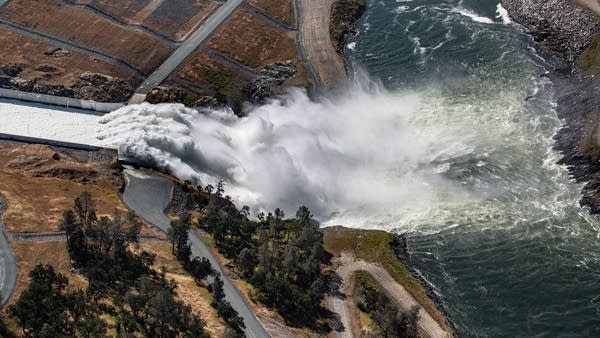Hydropower production took a hit in 2023
Regions that depend on it are having to look to other sources of energy — which can cost more.

U.S. hydropower production was down 11% from the year before and dipped to a 22-year low last year, according to the federal Energy Information Administration.
With climate change making drought patterns more volatile, places that rely on hydro are having to look for alternatives.
About half of the country’s hydropower is generated in the Pacific Northwest. The region saw high spring temperatures and early mountain snow melt last year.
“The earlier melt that we’ve been seeing for quite a while is a relatively clear climate change signal,” said Adrienne Marshall, a hydrologist at the Colorado School of Mines.
Early, rapid runoff makes it harder to store water and generate hydroelectricity year-round, she said. So utilities turn to other power sources.
“We spent in the neighborhood of $100 million purchasing supplemental power for our customers last year,” said Kirsty Grainger, the CFO of Seattle City Light, the city’s electric utility.
To make up for the hydro deficit, she said it bought natural gas power, which emits more carbon than hydro does, as well as some solar energy.
“So it increased rates for all of our customers by 4%,” Grainger said.
Seattle is working to further diversify its energy portfolio as hydropower gets less reliable, she added.





!["[Fire] risks have been around for a long time. They're getting worse," said UC San Diego's Judson Boomhower. Above, flames from the Palisades Fire approach homes on Jan. 8.](https://img.apmcdn.org/14b0ae7f1bd1220e0735e1306f8818138ce19ee9/uncropped/75420d-2025-03-gettyimages-2193000486-scaled-e1741864611230-600.jpg)

